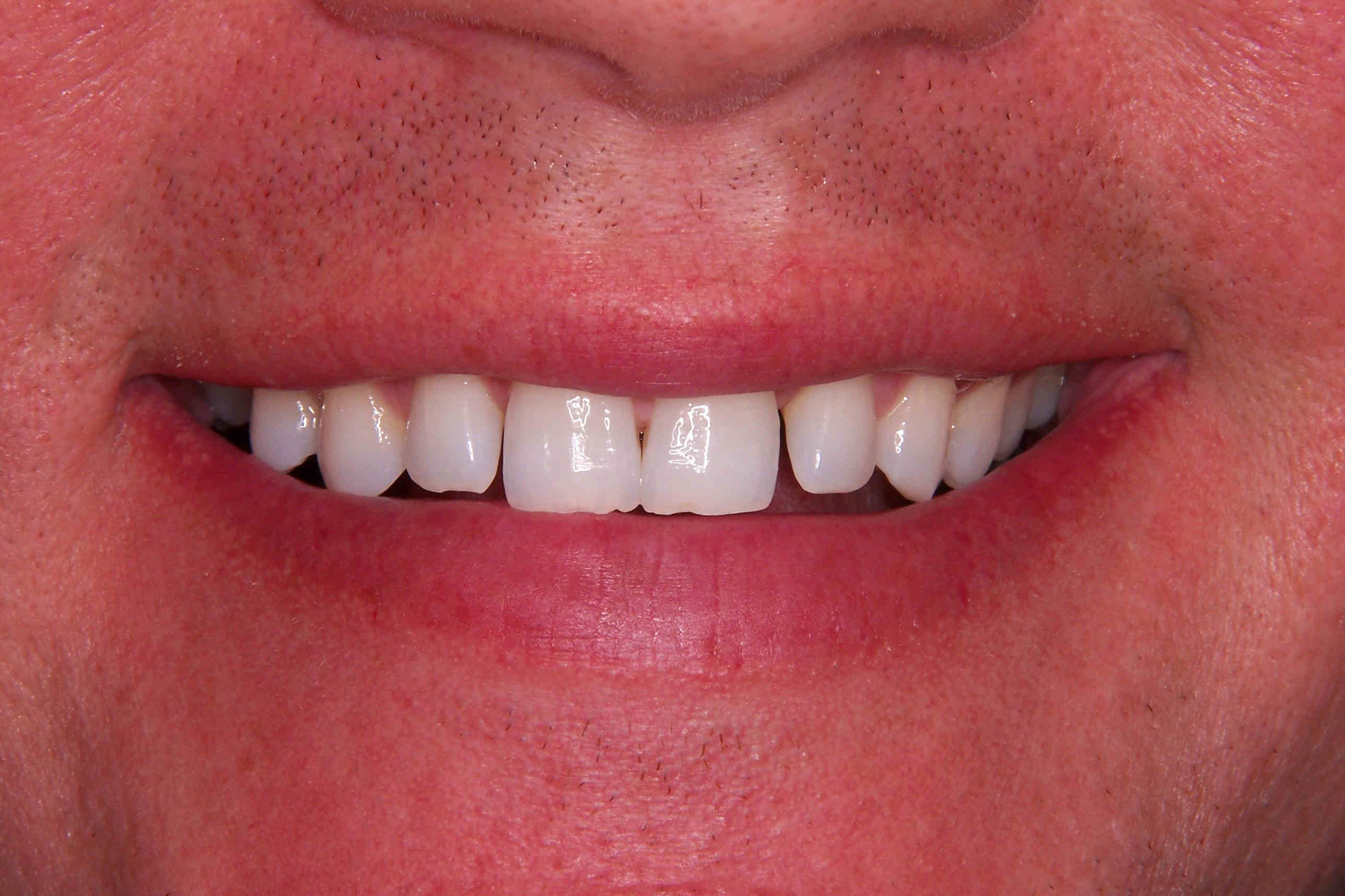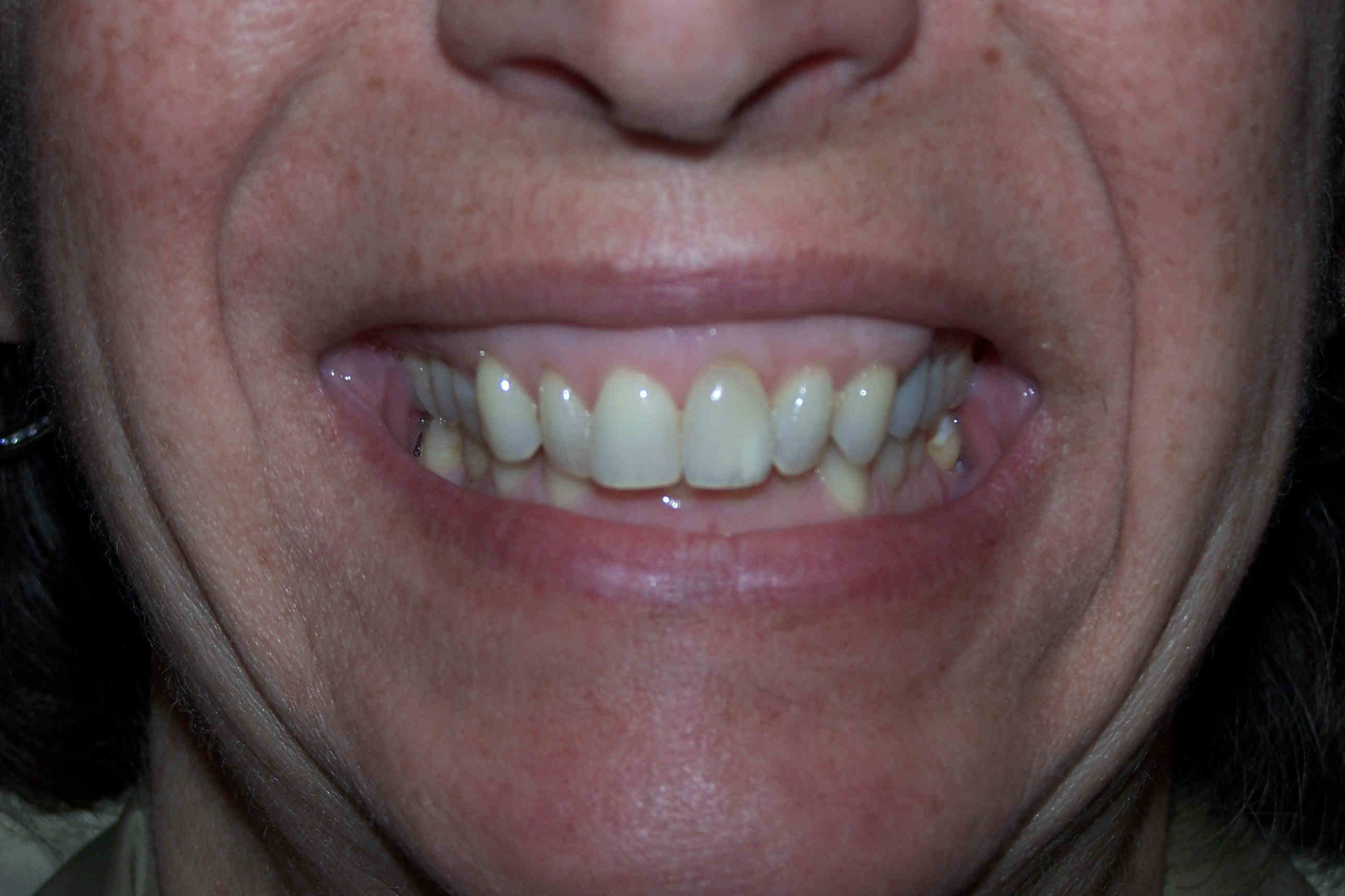Veneers
A veneer by definition is a thin sheet of material bonded to another material. In the case of dentistry, the thin material is either plastic or porcelain bonded to the surface of a cosmetically imperfect tooth. The tooth may be discolored, have fractures, show signs of wear, be the wrong size or shape, or be imperfect for a number of other reasons. The veneer covers the imperfection, making the tooth, or teeth look more esthetically pleasing.
Porcelain Veneers
Porcelain veneers are fabricated out of the mouth and then bonded to the teeth. Porcelain veneers can be thin allowing for a maximum amount of natural tooth preservation. However, if significant discoloration of the existing tooth exists, a thicker veneer might be required to hide the defect. Porcelain by nature has translucent properties which gives it a toothlike appearance and depth.
Before

After

Before

After

Before

After

Composite Veneers (Bonding)
Composite veneers can be fabricated directly by layering composite resin material directly on the the tooth. The composite typically costs less than the porcelain option and often needs to be replaced more frequently.
Comparison of Porcelain and Composite Veneers
Porcelain Composite - Multiple visits if custom shade is required
- Can last 10-15 years (if well cared for)
- Color is more steadfast
- Stronger
- More esthetic (mimics enamel better)
- More expensive
- Single visit
- Less time to fabricate
- Can last 4-8 years (if well cared for)
- More prone to discoloration
- More prone to chipping and fracture
- Less esthetic
- Less expensive
Care of Veneers and Bonding
- Avoid biting into hard foods like carrots or uncut apples with the veneered teeth
- Avoid opening bags or other containers with your teeth (This may sound obvious but people still do it.)
- Do Brush and floss - you still have tooth exposed to the oral cavity which can still get cavities
- Don't chew your fingernails
- If an occlusal splint or night guard is recommended, wear it faithfully
- Keep your regular recare appointments so the veneers can be checked regularly by a professional

